Some of history’s most bizarre and outrageous tank designs that were never made have now been created – and show why they never left the drawing board.
A new exhibition at The Tank Museum in Bovington, Dorset, proves how man has been dreaming of creating a successful tank for thousands of years.
The accurate models were painstakingly created by experts in the Netherlands for the country’s National Military Museum’s Tank! Back to the Future exhibition.
But they are now to go on display in the UK for the first time at the Dorset attraction with the world’s finest collection of real tanks.
Tanks, as we know them, rolled onto the battlefield in 1916 during World War One, but the concept goes back to ancient peoples.
Among the models is one designed by ancient Assyrians from 9th century BC, which was an early siege vehicle – a battering ram with armour and a protruding weapon.
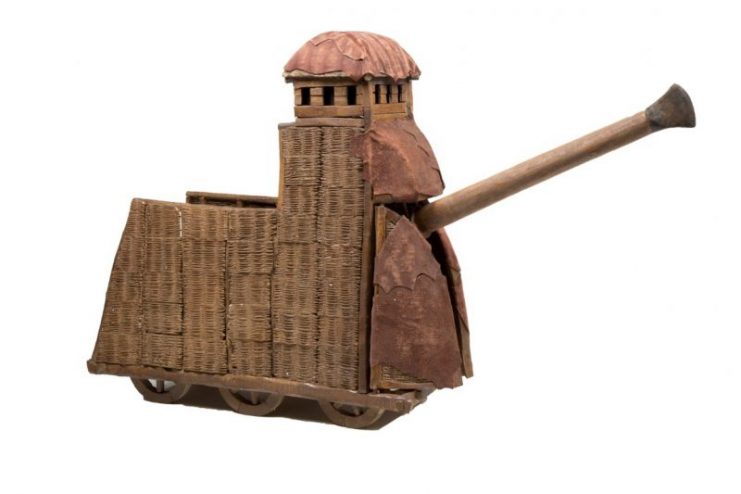
The Romans, as pioneers of military hardware, had a number of designs that were used including the Carrobalista which could fire arrows 328 yards (300m).
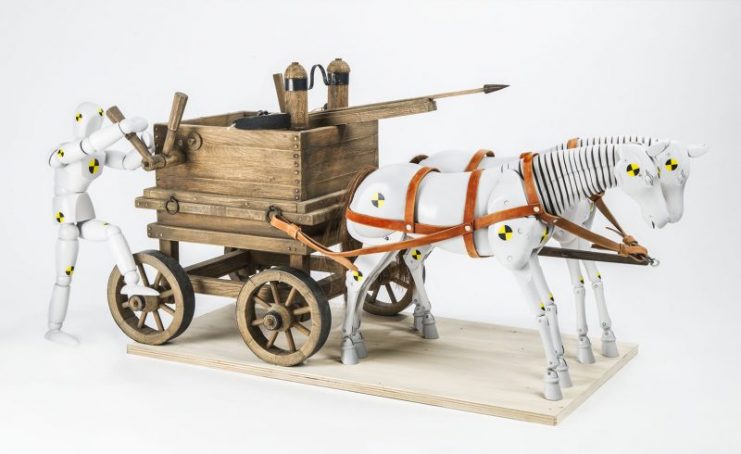
A depiction of one adorns Trajan’s column in Rome and it shows the horse-drawn contraption which acted like a giant catapult.
A mad German knight called Ludwig von Eyb was also busy designing tanks and in around 1500AD he invented the ‘mobile castle’ which included battlements for archers to hide behind.
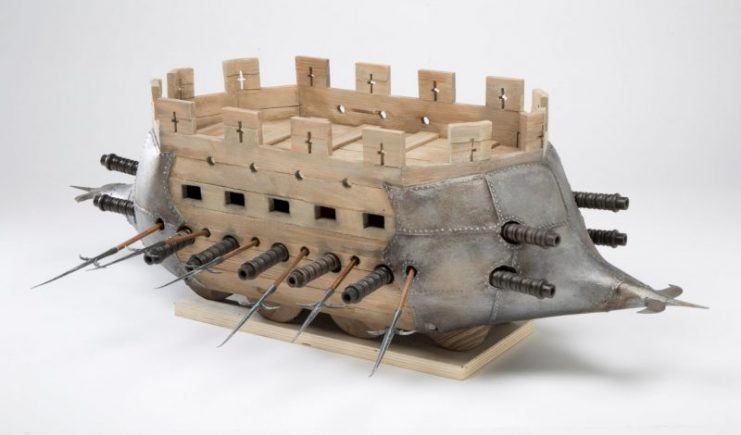
He also designed the ‘cannon cart’ in which a horse pushed a cannon towards the enemy.
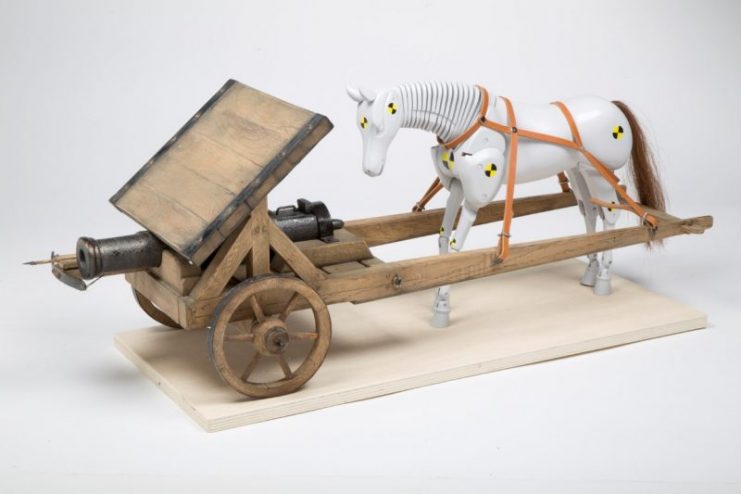
Leonardo Da Vinci, as well as everything else he did, managed to design a tank that was propelled by eight men and could fire in a 360-degree circle.

The design from 1485 was never made and would have been too heavy and cumbersome to have worked.
Another European designer was Frenchman Nicolas Joseph Cugnot who in 1769 was first to utilise the steam engine with a chassis and wheels; unfortunately, the engine was too heavy for it to move anything but itself.
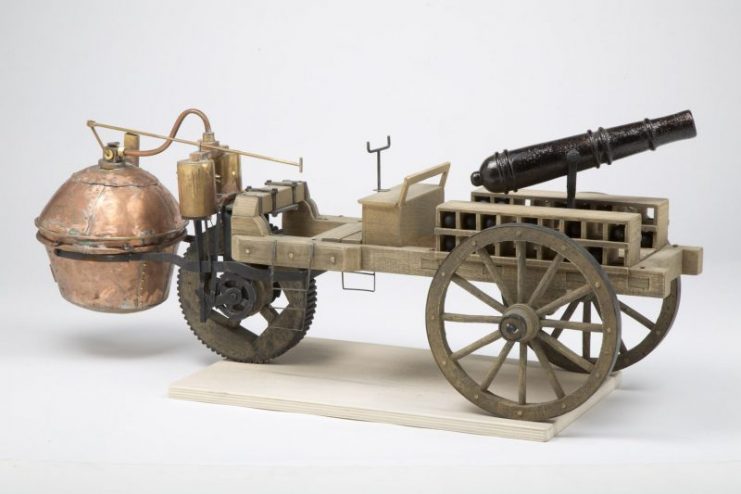
The collection also includes a 1903 design by author HG Wells who described armoured combat vehicles in one of his novellas.
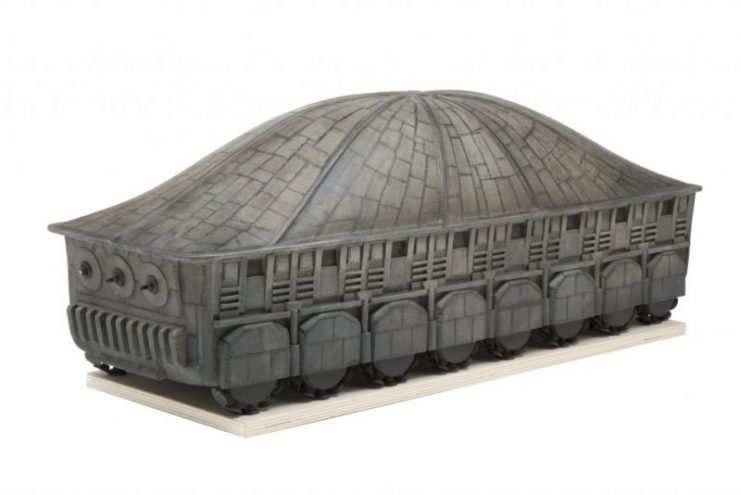
During the First World War, the Russian designer Lebedenko created the ‘Tsar Tank’ – a machine with two wheels that stood 27 feet high, but it was not a success.
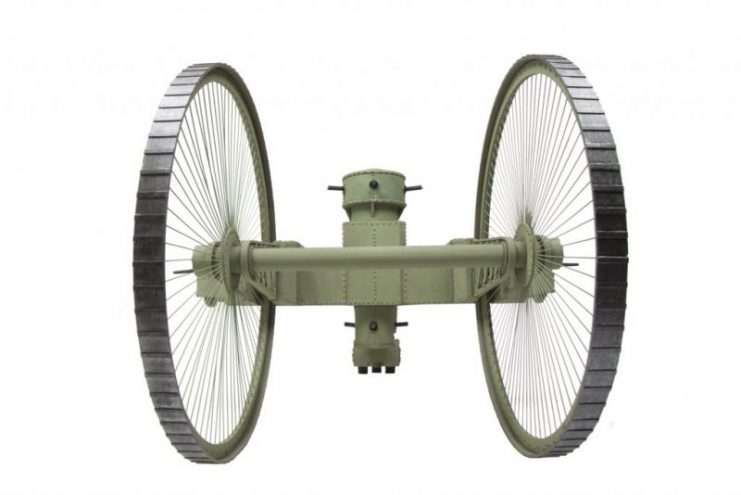
In 1918 the US designed an electric circular cage that could achieve speeds of 60KM – but the fanciful contraption was never built.
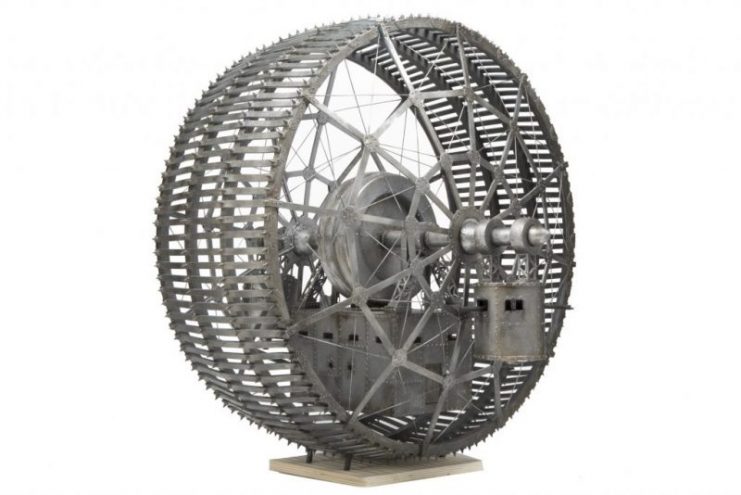
Other models include a flying tank, a perfectly spherical design from Germany in WWII that was captured by the Russians – and even a futuristic tank.
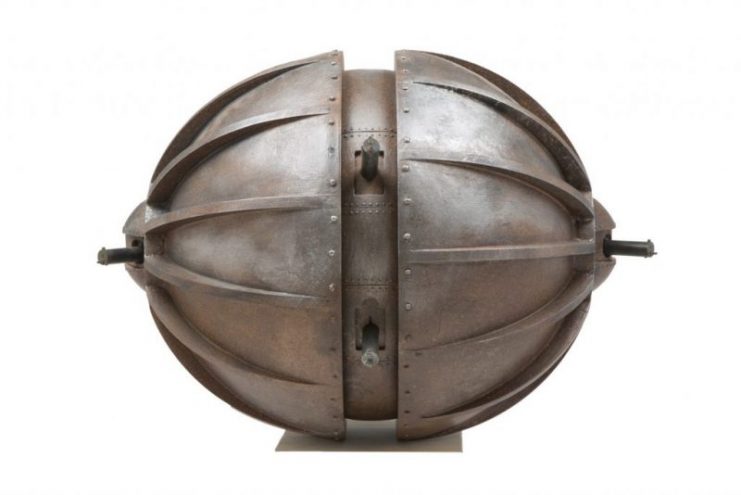
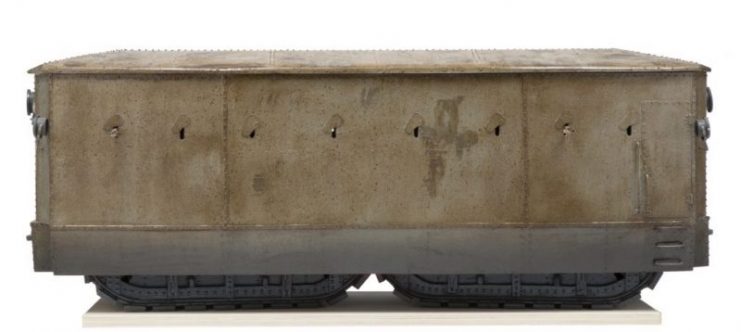
Chris van Schaardenburgh, Head of Collections at The Tank Museum, said: “Our collection here begins in the First World War when the Mark I was developed and first saw action in September 1916.
“But this model collection shows that the military inventors and designers throughout history have always dreamed of creating tanks.
“And the reason is always the same; it’s about protection, mobility and firepower – or inflicting damage on the enemy.
“From ancient history to the modern day and including sci-fi concept ideas, the fundamentals have remained the same.
“Over the centuries the designs have developed with introduction of new technology such as gunpowder, the steam engine and then internal combustion engine and steels and laminates, lasers and electricity.
“Some of these designs were actually made and were effective – like the Roman ones – but others never progressed beyond an idea because they were not viable or the prototype showed up the flaws in the concept.
“This exhibition is a fascinating journey through some of the might-have-beens and pre-cursors of our amazing collection.”
The exhibition opens on March 22.
